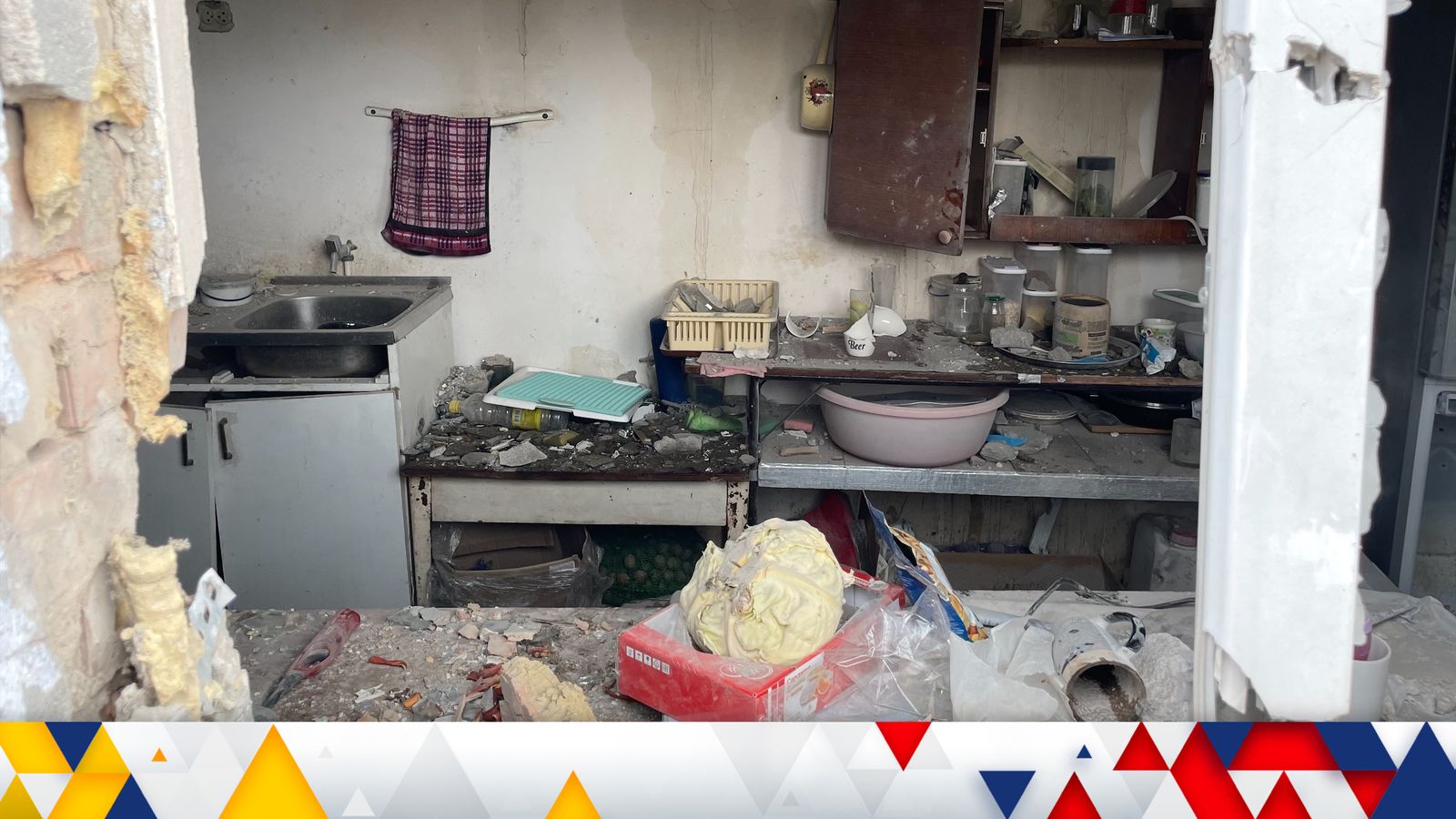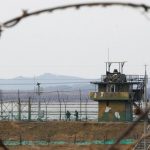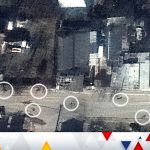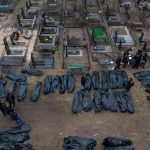Horokhivka is a village of just 260 people, but its residents have made 17 call-outs in the last fortnight to the local national guard bomb disposal team.
The team arrive at a destroyed home where the walls and roof are crumbling. The metal front door has been blasted off and reshaped by a shell that landed on the patio three days previously. They check for unexploded munitions in the debris.
Remnants of normal life, such as food on the counter and a pan on the hob are mixed with rubble. The family were in a neighbouring village when their house got hit.
Mother-of-two Oxyana Human is in tears as she says: “We came to our home and it’s like this, and our dog was killed – and it’s lucky that we weren’t home. I don’t have any words – you can see the damage for yourself.”
Most villagers have already left and now Oxyana, her husband and their children have no choice but to go too. Everything they can salvage is packed into the car. Their mattress is loaded on the roof, but they don’t know where they are going.
In the Mykolaiv region there are 2,000 outstanding civilian applications for bomb disposal. Denis, from the national guard’s de-mining unit, holds up a piece of the shell which has tiny pieces of metal meshed into rubber.
He says: “There are 470 of these bits of shrapnel made from metal which are designed to hit people and they are being used against civilians, not the military.”
Ukraine war: Captured oligarch Viktor Medvedchuk among 206 more individuals sanctioned by UK
Ukraine war: Who is the ‘Butcher of Syria’ General Aleksandr Dvornikov and why has Russia put him in charge in Ukraine?
Ukraine war: Russian forces amass in the east, satellite images show – as Zelenskyy accuses Putin of using phosphorus bombs
According to Kyrylo Tymoshenko, deputy chief of staff for President Volodymyr Zelenskyy, so far 168 cities and villages have been cleared of unexploded bombs and mines.
Next, we visit a soya powder factory, where the wall of the plant has been torn away and a shiny new cylinder for drying the milk into powder is punctured with shrapnel. It’s not just communities picking up the pieces, the war has left a gaping hole in the country’s industry. The World Bank estimates Ukraine’s economy has shrunk by 45% since the invasion began.
Stationary grain wagons on the rail tracks outside of Mykolaiv are a reminder that one of the world’s biggest exporters of wheat has almost ground to a halt.
98% of Ukraine cereals are exported through the southern ports, but Russia has blockaded the Black Sea and the infrastructure isn’t there to get exports out nearly as easily by land.
Grain exports are currently limited to 500,000 tons a month, down from as much as 5 million tons before the war, a loss of $1.5 billion (£1.14bn), the country’s agriculture ministry says. This is exactly the amount the World Bank is reportedly planning to offer Ukraine in financial support to keep crucial services running.
The invaders have also been blowing up airports, railway stations and fuel supplies. We visit a depot close to the frontline where four fuel drums have been bombed. Two remain standing but damaged, one is a misshapen blob and the fourth is reduced to twisted metal strewn over a one hundred metre radius. A melted train carriage sits on tracks nearby.
For all the sanctions on Russia, it is Ukraine where industry is battered, workers have fled, and exports are stemmed.
Between Mykolaiv and Odesa are seaside tourist towns. They are ghost towns and are likely to remain so for a considerable time. Razor wire is rolled out along Kobleve beach where the only recent visitors were from a failed amphibious landing by the Russians.
But it would be no surprise if Putin has his sights on this region. Ukraine’s economic ruin would be complete if Russian forces are able to cross Mykolaiv’s Southern Bug river, take the trading post of Odesa and landlock the country.





















